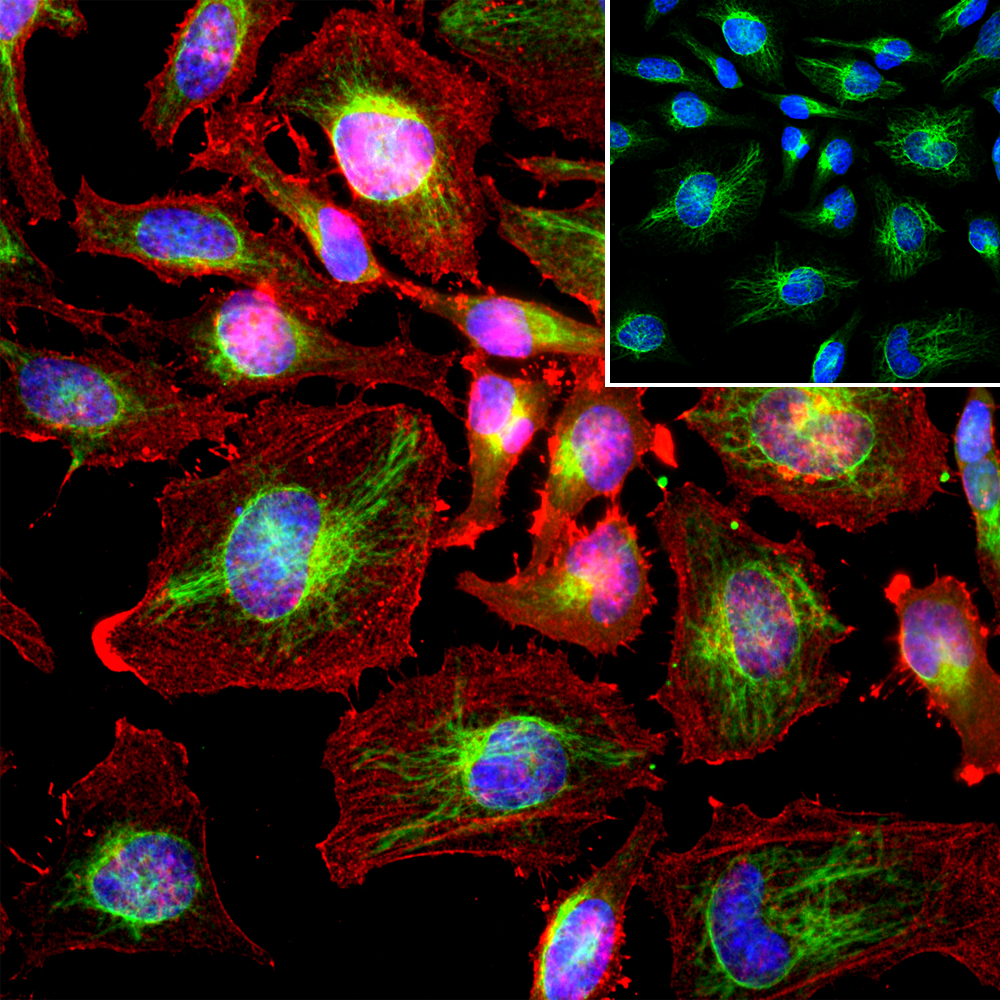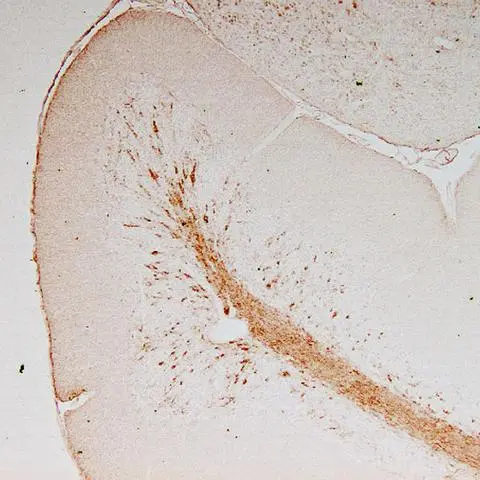![ICC/IF analysis of chicken postnatal erythrocytes using GTX40346 Vimentin antibody [VI-10]. Green : Primary antibody Red : Tubulin Blue : DAPI ICC/IF analysis of chicken postnatal erythrocytes using GTX40346 Vimentin antibody [VI-10]. Green : Primary antibody Red : Tubulin Blue : DAPI](https://www.genetex.com/upload/website/prouct_img/normal/GTX40346/GTX40346_20191025_AP_002_235_w_23060820_227.webp)
ICC/IF analysis of chicken postnatal erythrocytes using GTX40346 Vimentin antibody [VI-10]. Green : Primary antibody Red : Tubulin Blue : DAPI
Vimentin antibody [VI-10]
GTX40346
ApplicationsImmunoFluorescence, ImmunoPrecipitation, Western Blot, ImmunoCytoChemistry, ImmunoHistoChemistry, ImmunoHistoChemistry Paraffin
Product group Antibodies
ReactivityChicken, Human, Mouse, Porcine, Rat
TargetVIM
Overview
- SupplierGeneTex
- Product NameVimentin antibody [VI-10]
- Delivery Days Customer9
- ApplicationsImmunoFluorescence, ImmunoPrecipitation, Western Blot, ImmunoCytoChemistry, ImmunoHistoChemistry, ImmunoHistoChemistry Paraffin
- CertificationResearch Use Only
- ClonalityMonoclonal
- Clone IDVI-10
- Concentration1 mg/ml
- ConjugateUnconjugated
- Gene ID7431
- Target nameVIM
- Target descriptionvimentin
- Target synonymsvimentin, epididymis secretory sperm binding protein
- HostMouse
- IsotypeIgM
- Protein IDP08670
- Protein NameVimentin
- Scientific DescriptionThis gene encodes a type III intermediate filament protein. Intermediate filaments, along with microtubules and actin microfilaments, make up the cytoskeleton. The encoded protein is responsible for maintaining cell shape and integrity of the cytoplasm, and stabilizing cytoskeletal interactions. This protein is involved in neuritogenesis and cholesterol transport and functions as an organizer of a number of other critical proteins involved in cell attachment, migration, and signaling. Bacterial and viral pathogens have been shown to attach to this protein on the host cell surface. Mutations in this gene are associated with congenital cataracts in human patients. [provided by RefSeq, Aug 2017]
- ReactivityChicken, Human, Mouse, Porcine, Rat
- Storage Instruction2°C to 8°C
- UNSPSC12352203
References
- Scaturro P, Trist IM, Paul D, et al. Characterization of the mode of action of a potent dengue virus capsid inhibitor. J Virol. 2014,88(19):11540-55. doi: 10.1128/JVI.01745-14Read this paper

![IP analysis of HeLa cell lysate using GTX40346 Vimentin antibody [VI-10] . The signal wass detected by GTX27752 Vimentin antibody [VI-01] in WB assay. Lr : Lysate (reducing conditions) Lnr : Lysate (non-reducing conditions) IPr : Immunoprecipitate (reducing conditions) IPnr : Immunoprecipitate (non-reducing conditions) IP analysis of HeLa cell lysate using GTX40346 Vimentin antibody [VI-10] . The signal wass detected by GTX27752 Vimentin antibody [VI-01] in WB assay. Lr : Lysate (reducing conditions) Lnr : Lysate (non-reducing conditions) IPr : Immunoprecipitate (reducing conditions) IPnr : Immunoprecipitate (non-reducing conditions)](https://www.genetex.com/upload/website/prouct_img/normal/GTX40346/GTX40346_20191025_AP_007_236_w_23060819_244.webp)



![IHC-P analysis of human melanoma tissue using GTX80814 Vimentin antibody [J144]. Left : Primary antibody Right : Negative control without primary antibody Antigen retrieval : heat induced antigen retrieval was performed using 10mM sodium citrate (pH6.0) buffer, microwaved for 8-15 minutes Dilution : 1:1000](https://www.genetex.com/upload/website/prouct_img/normal/GTX80814/GTX80814_1419_IHC-P_w_23061322_923.webp)
![IHC-P analysis of human lung carcinoma tissue using GTX83095 Vimentin antibody [4F2E9].](https://www.genetex.com/upload/website/prouct_img/normal/GTX83095/GTX83095_20170912_IHC-P_w_23061322_341.webp)
